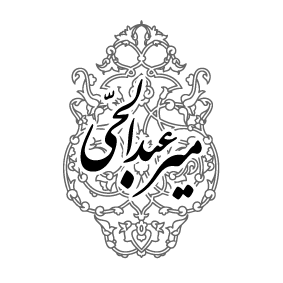Bulletproof Glass: A Comprehensive Review of Features, Benefits, and Applications
Bulletproof glass, also known as ballistic glass or bullet-resistant glass, is an advanced product designed to resist bullet penetration and protect lives and property. This glass is made from a combination of multiple layers of glass (usually tempered) and polymeric materials such as polycarbonate or polyvinyl butyral (PVB) that are bonded together through lamination. As a glass manufacturer, we produce bulletproof glasses with international standards using state-of-the-art technologies and high-quality raw materials. In this report, relying on credible Iranian and global sources, we examine the features, benefits, applications, and technical specifications of bulletproof glass to provide localized, original, and accurate content.
Production Process
The production of bulletproof glass is a complex and precise process that requires advanced equipment and adherence to quality standards. The production stages include the following:
- Selecting Base Glass
- Placing Polymeric Layers
- Lamination and Bonding
- Autoclave
- Quality Control
Tempered or raw glasses with thicknesses of 4 to 12 millimeters are selected as the base. These glasses must be free of any impurities to maintain transparency and resistance.
PVB (polyvinyl butyral) or polycarbonate layers with thicknesses of 0.38 to 1.52 millimeters are placed between the glass layers. These layers are installed in a clean room to prevent dust entry.
The glasses and polymeric layers are bonded under pressure and heat (around 150 degrees Celsius) in a lamination furnace. This process ensures permanent adhesion and structural integrity.
For final stabilization and increased transparency, the glasses are placed in an autoclave furnace for 4 to 6 hours. This stage improves resistance to impact and penetration.
Standard tests such as bullet resistance tests (based on UL 752 or EN 1063), transparency (at least 85%), and moisture resistance are performed.
Technical Production Specifications
Glass Thickness
19 to 89 millimeters (depending on protection level).
PVB Thickness
0.38, 0.76, or 1.52 millimeters.
Standard Dimensions
Up to 320×220 centimeters; custom up to 600×300 centimeters.
Weight
30 to 100 kilograms per square meter (depending on thickness).
Equipment
Lamination furnace, autoclave, precise cutting machines, and clean room.
Types of Bulletproof Glass
- Glass-Polycarbonate
- PVB Laminated Glass
- Asymmetric Glass
- Symmetric Glass
A combination of glass and polycarbonate to reduce weight and increase strength.
Glass layers with PVB for high safety and adhesion.
One-sided design for resistance to bullets from the exterior (e.g., for armored vehicles).
Equal resistance from both sides, suitable for fixed windows.
Types and Standards of Bulletproof Glass
Bulletproof glass is categorized into different levels based on its resistance to bullets. International standards such as UL 752 (USA) and EN 1063 (Europe) define the protection levels. The table below shows some common levels and their specifications:
UL 752 Level 1
Weapon and Ammunition Type:
9mm, 124 grain, 1175-1293 ft/s
Approximate Thickness (mm):
19-32
Applications:
Jewelry stores, currency exchanges
UL 752 Level 3
Weapon and Ammunition Type:
.44 Magnum, 240 grain, 1350-1485 ft/s
Approximate Thickness (mm):
32-44
Applications:
Banks, government offices
UL 752 Level 8
Weapon and Ammunition Type:
7.62×51mm NATO, 150 grain, 2750-3025 ft/s
Approximate Thickness (mm):
65-89
Applications:
Armored vehicles, security centers
EN 1063 BR4
Weapon and Ammunition Type:
.44 Magnum
Approximate Thickness (mm):
25-44
Applications:
Commercial displays, museums
EN 1063 BR7
Weapon and Ammunition Type:
7.62×51mm NATO
Approximate Thickness (mm):
65-89
Applications:
Embassies, military bases
Features and Benefits
Bulletproof glass has numerous features and benefits due to its multi-layer structure and high-quality materials:
- Ballistic Resistance
- Safety Upon Breaking
- Sound and Thermal Insulation
- UV Protection
- High Transparency
- Design Flexibility
- Durability and Environmental Sustainability
Capable of stopping various bullets, from 9mm handguns to powerful rifles like 7.62 NATO, depending on the protection level.
In case of bullet impact, PVB or polycarbonate layers prevent shard dispersion, reducing the risk of injury.
Reduces noise up to 45 decibels and optimizes energy consumption by reducing heat transfer.
Blocks 99% of ultraviolet rays, preventing fading of interior decorations.
Uniform refractive index of layers maintains transparency of 85% or higher.
Available in various dimensions, thicknesses, and colors (transparent, opaque, colored) to match architectural styles.
Resistant to moisture, sunlight, and harsh weather conditions; recyclable and environmentally friendly.
Ordering and Installation Process
- Ordering: Customers must specify color, thickness, dimensions, and required fittings. On-site measurement services are available.
- Production Time: Standard production takes 7 working days, with an expedited option (1 day) available.
- Installation: Must be performed by professionals to prevent damage. The process includes precise measurement, pre-tempering cutting, and installation with appropriate fittings.
- Pricing: Calculated based on thickness, color, and area (square meter × unit price). For example, in 2024, the price of standard tempered glass ranges from 700,000 to 1,500,000 IRR per square meter.
Applications
Bulletproof glass, due to its security features and aesthetic appeal, is used in a wide range of projects in Iran and worldwide:
Banks and Currency Exchanges
Protection of employees and customers against armed attacks.
Jewelry Stores and Museums
Safeguarding valuable items and artworks.
Government and Military Buildings
Such as embassies and security bases.
Armored Vehicles
For important individuals and security vehicles.
Commercial Centers and Villas
To enhance security and visual appeal.
Spider Facades and Security Windows
In modern projects like the Iran Grand Bazaar.
Key Tips for Choosing Bulletproof Glass
- Protection Level: Choose the appropriate level (such as BR4 or Level 3) based on the type of threat (handgun, rifle, shotgun).
- Thickness and Weight: For light applications like currency exchanges, 32 mm is sufficient; for armored vehicles, higher thicknesses are recommended.
- Transparency: Use high-quality sheets to maintain 85% or more transparency.
- Professional Installation: Installation by experts is essential for proper performance.
- Expert Consultation: Contact our experts for selecting the best product.
